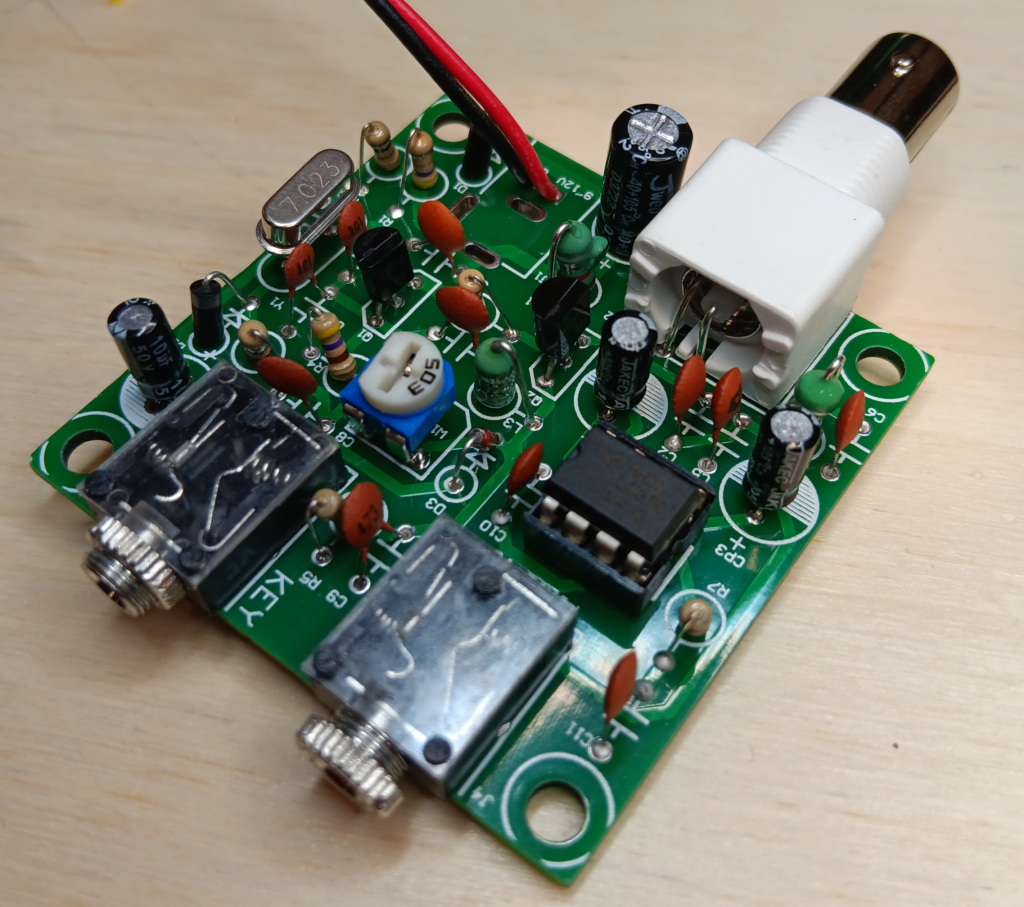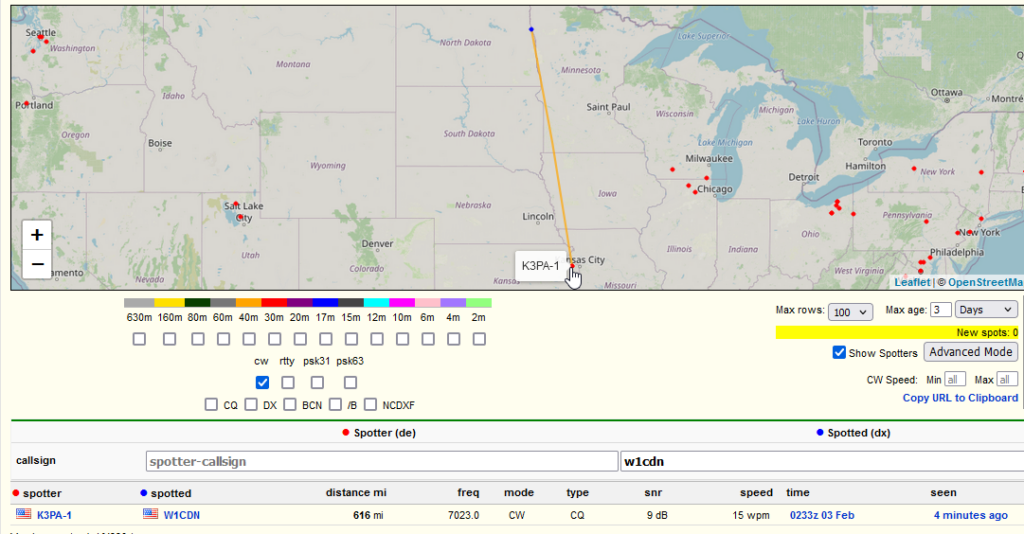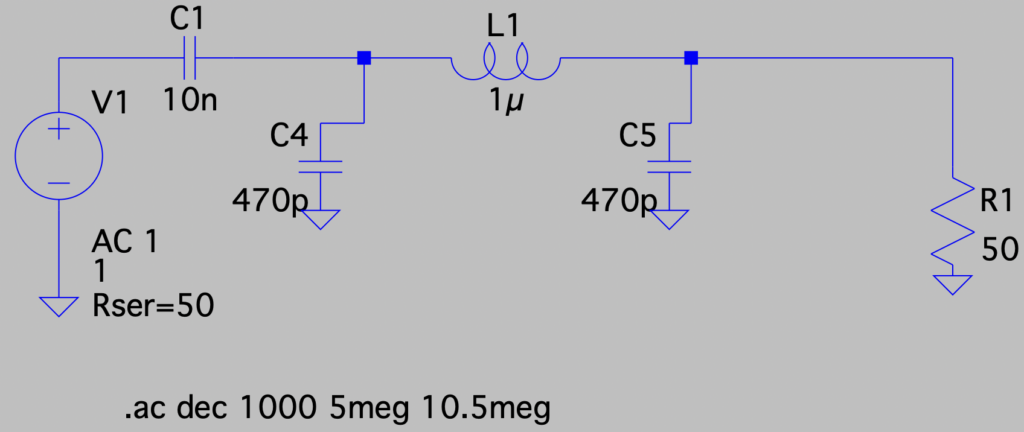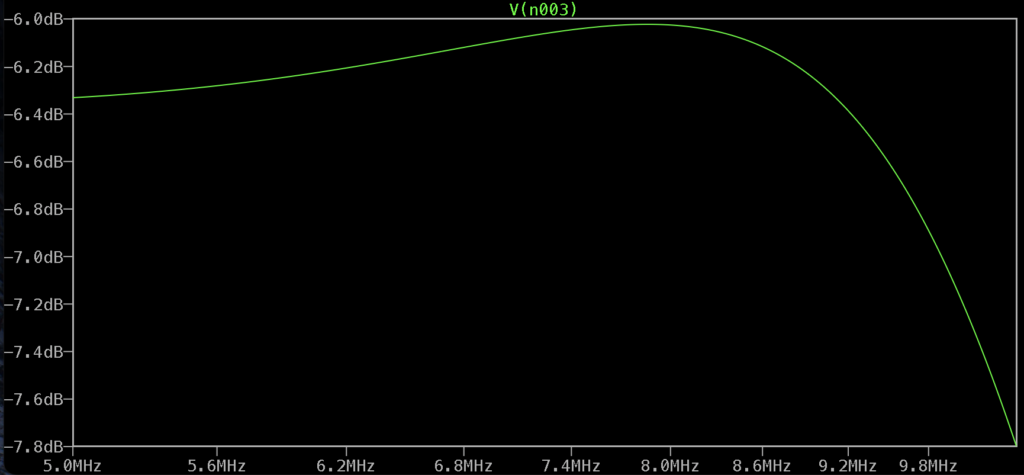I bought a few 40m “Chinese Pixie” (known as such because you can buy them from China and they come with no identified designer or manufacturer) transceiver kits on AliExpress recently and put one of them together this week. To my surprise, it worked! I’ve been having a bit of bad luck on homebrewing lately, so I wanted to step back and make sure I could at least put something like this together. This exercise has given me some new ideas.

Even managed to send enough of a CQ on the straight key with no sidetone that RBN picked me up. Seems like a win with 9V!

A known problem with this design is the lack of ability to block AM broadcast frequencies (530 kHz – 1700 kHz). I plugged in the headphones last night and caught several CW signals as well as a sports announcer! I didn’t stick around to find out what station, but this indicates some better filtering is required. Maybe I’ll build a band-pass filter for 40m to replace the LPF in place.
Here are the LTspice schematic and the frequency response for the filter it came with:


Because this is a pretty small transceiver with low power, the supplied inductors are all inline parts rather than toroids. I need to dig out my inductor collection and see what I have to work with, before I can swap in something else. I’ll probably start with N6QW’s BPF design and see if I can get away with fewer/smaller parts than what he has.
Here is the LTspice model for the LPF shown above:
Version 4 SHEET 1 880 680 WIRE 16 368 -48 368 WIRE 176 368 80 368 WIRE 240 368 176 368 WIRE 416 368 320 368 WIRE 608 368 416 368 WIRE -48 400 -48 368 WIRE 176 416 176 368 WIRE 176 416 144 416 WIRE 416 416 416 368 WIRE 416 416 400 416 WIRE 608 448 608 368 WIRE -48 544 -48 480 FLAG -48 544 0 FLAG 608 528 0 FLAG 400 480 0 FLAG 144 480 0 SYMBOL voltage -48 384 R0 WINDOW 3 24 140 Left 2 WINDOW 123 24 118 Left 2 WINDOW 39 25 165 Left 2 SYMATTR Value 1 SYMATTR Value2 AC 1 SYMATTR SpiceLine Rser=50 SYMATTR InstName V1 SYMBOL Res 592 432 R0 SYMATTR InstName R1 SYMATTR Value 50 SYMBOL cap 80 352 R90 WINDOW 0 0 32 VBottom 2 WINDOW 3 32 32 VTop 2 SYMATTR InstName C1 SYMATTR Value 10n SYMBOL cap 160 480 R180 WINDOW 0 24 56 Left 2 WINDOW 3 24 8 Left 2 SYMATTR InstName C4 SYMATTR Value 470p SYMBOL cap 416 480 R180 WINDOW 0 24 56 Left 2 WINDOW 3 24 8 Left 2 SYMATTR InstName C5 SYMATTR Value 470p SYMBOL ind 336 352 R90 WINDOW 0 5 56 VBottom 2 WINDOW 3 32 56 VTop 2 SYMATTR InstName L1 SYMATTR Value 1µ TEXT 0 624 Left 2 !.ac dec 1000 5meg 10.5meg

One thought on ““Chinese Pixie” build and LPF LTspice model”